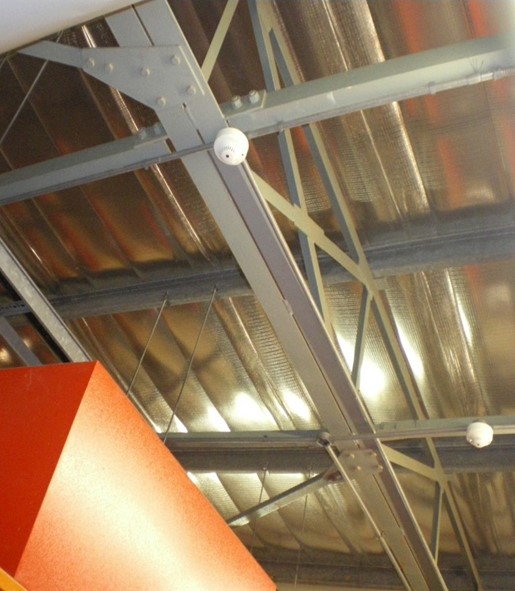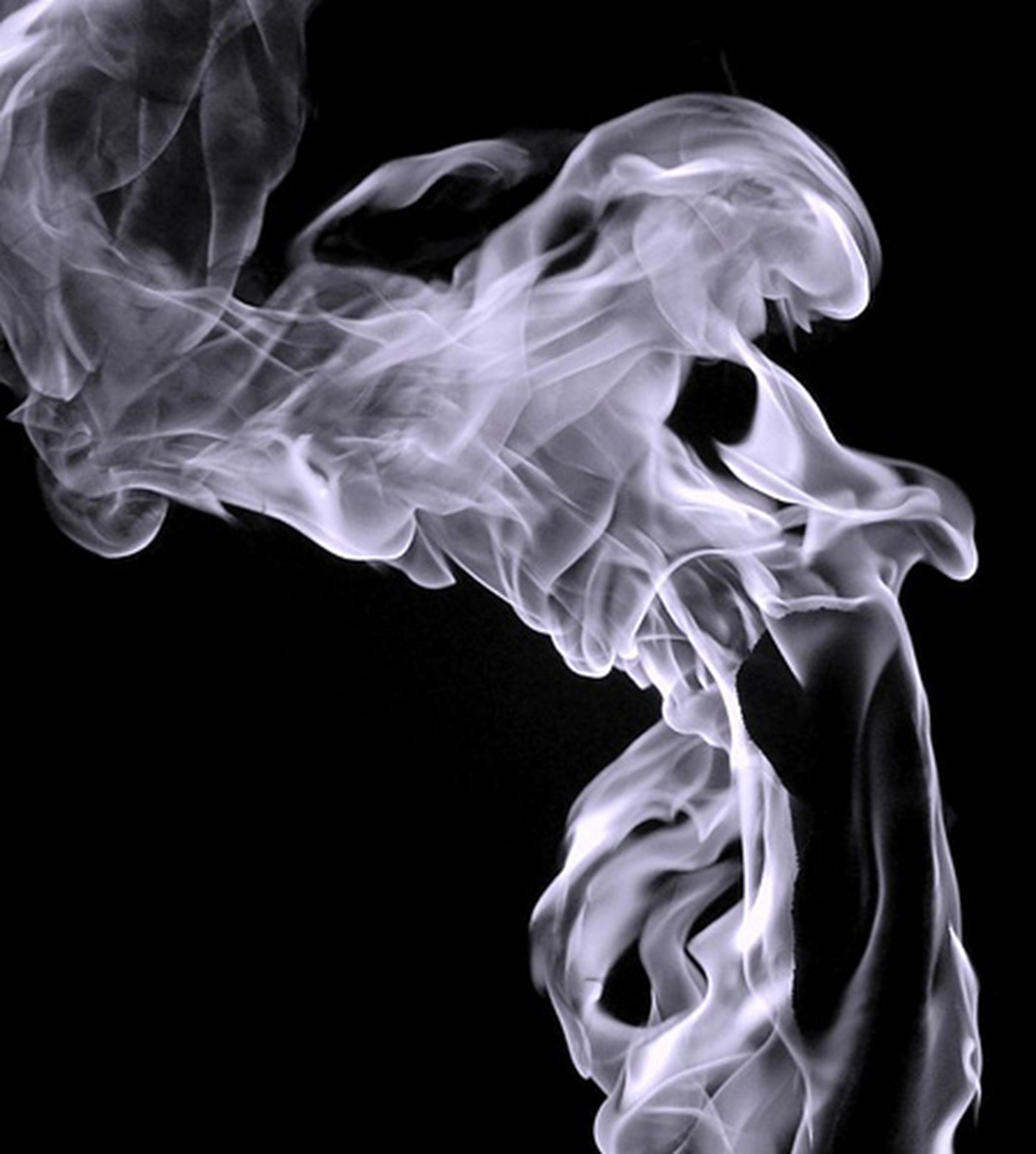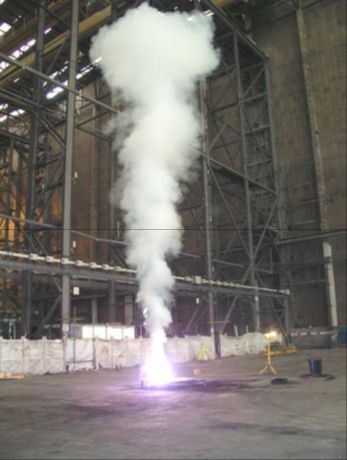It is easier to mount the detector on the beams than to mount them on the roof. What happens if the smoke misses the detector on the way to the ceiling? The fire must grow to a very big size to fill the roof down to the detector level before it can operate. We have lost the purpose of fire detection. i.e. early warning.
 The sophistication of detection devices today with increased sensitivity and flexibility is leading to a misconception creeping into the industry that we can mount smoke and heat detection devices, particularly beam detectors and aspiration systems, at any level.
The sophistication of detection devices today with increased sensitivity and flexibility is leading to a misconception creeping into the industry that we can mount smoke and heat detection devices, particularly beam detectors and aspiration systems, at any level.
This is incorrect as products from a fire, particularly heat and smoke will rise, and as it rises it mixes with air and if it does not hit a ceiling it will continue to rise until its identity is lost.
If the smoke reaches a solid object such as a ceiling or roof it will stop and spread across the ceiling. Smoke will migrate to the highest point. It is here therefore that all smoke detection devices should be mounted: this includes point detectors, aspiration sampling pipes and beam detectors.
The Code of Practice allows a 600 mm MOUNTING tolerance from the roof for smoke detectors (and 150 mm for heat detectors). All smoke detection devices must be mounted as close to the ceiling or apex of the roof as possible.
For a roof with an apex all smoke and heat is going to rise into this apex. The code of practice acknowledges this and gives an increase in spacing for devices mounted here.
The Code of practice allows 7.5 m coverage of a smoke detector (5.3 m coverage of heat detectors). This does not mean that the detector can sense smoke that is within 7.5 m of it or the heat detector will operate is the heat is 5.3 m away. The 7.5 m allowance is provided with the knowledge that smoke hitting a ceiling or roof will stop and quickly move across the ceiling to 7.5 m and fill the chamber of a point detector or break the beam of the beam detector.
 Detection devices mounted lower than the allowed limits (600 mm for smoke and 150 mm for heat) run the risk of the rising smoke or heat missing the device and rising until it does hit the roof, at this point it will spread out to cover the whole roof. As the fire grows the depth of the smoke on the roof will deepen until it reaches the point where the smoke detector is situated allowing the smoke to fill the chamber of the smoke detector or break the beam of the beam detector. This seriously delays the operation of the fire detection system.
Detection devices mounted lower than the allowed limits (600 mm for smoke and 150 mm for heat) run the risk of the rising smoke or heat missing the device and rising until it does hit the roof, at this point it will spread out to cover the whole roof. As the fire grows the depth of the smoke on the roof will deepen until it reaches the point where the smoke detector is situated allowing the smoke to fill the chamber of the smoke detector or break the beam of the beam detector. This seriously delays the operation of the fire detection system.
Smoke or heat will not stop to operate the detection device you have mounted one metre from the roof it will pass it by until it reaches the roof.
SMOKE AND HEAT DETECTORS MUST BE MOUNTED AT THE HIGHEST POINT
Supplementary detection
Additional fire detection can be installed at lower levels in the hope to catch the smoke before it reaches the ceiling but should only be used as an extra to ceiling mounted smoke detectors.

